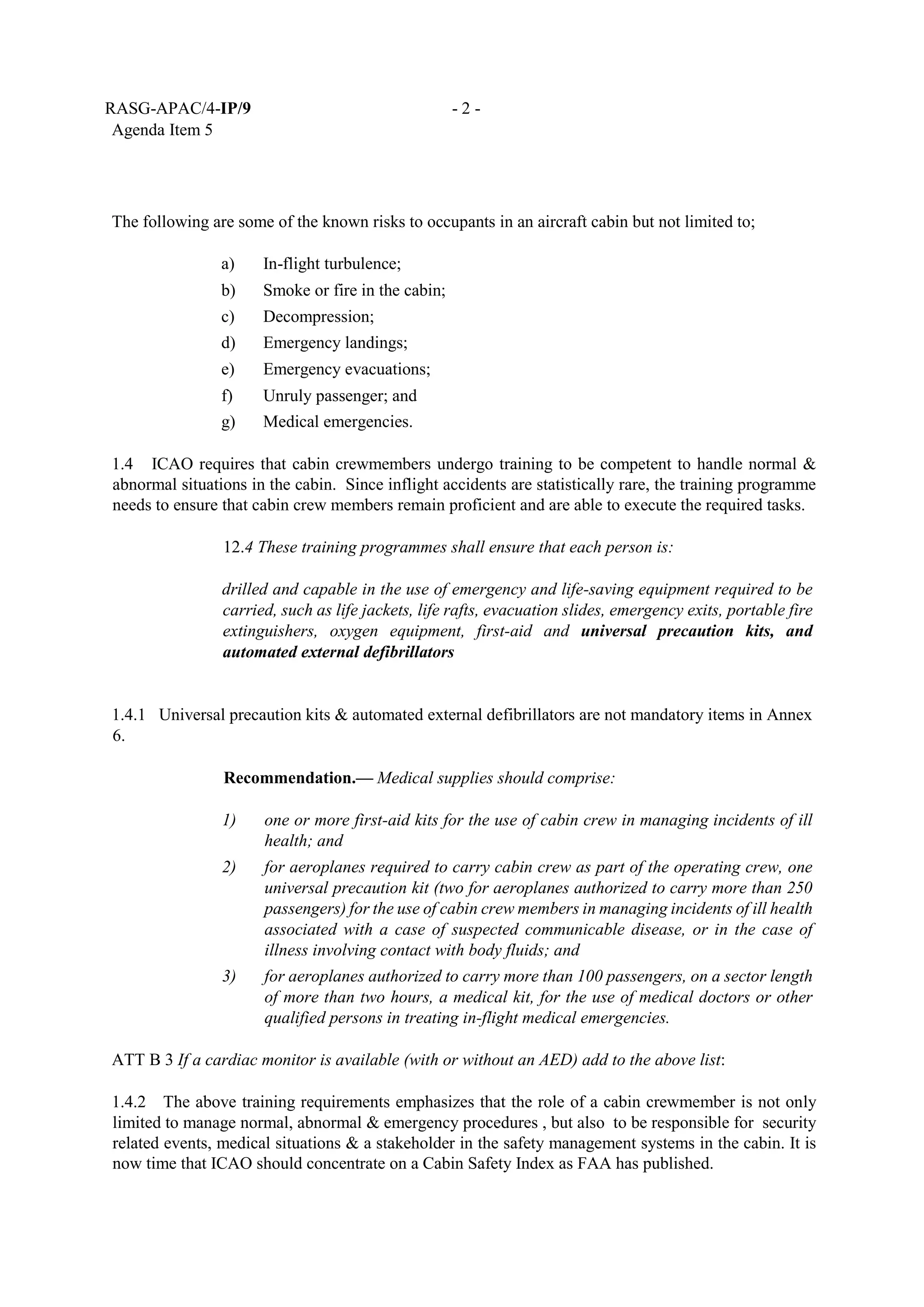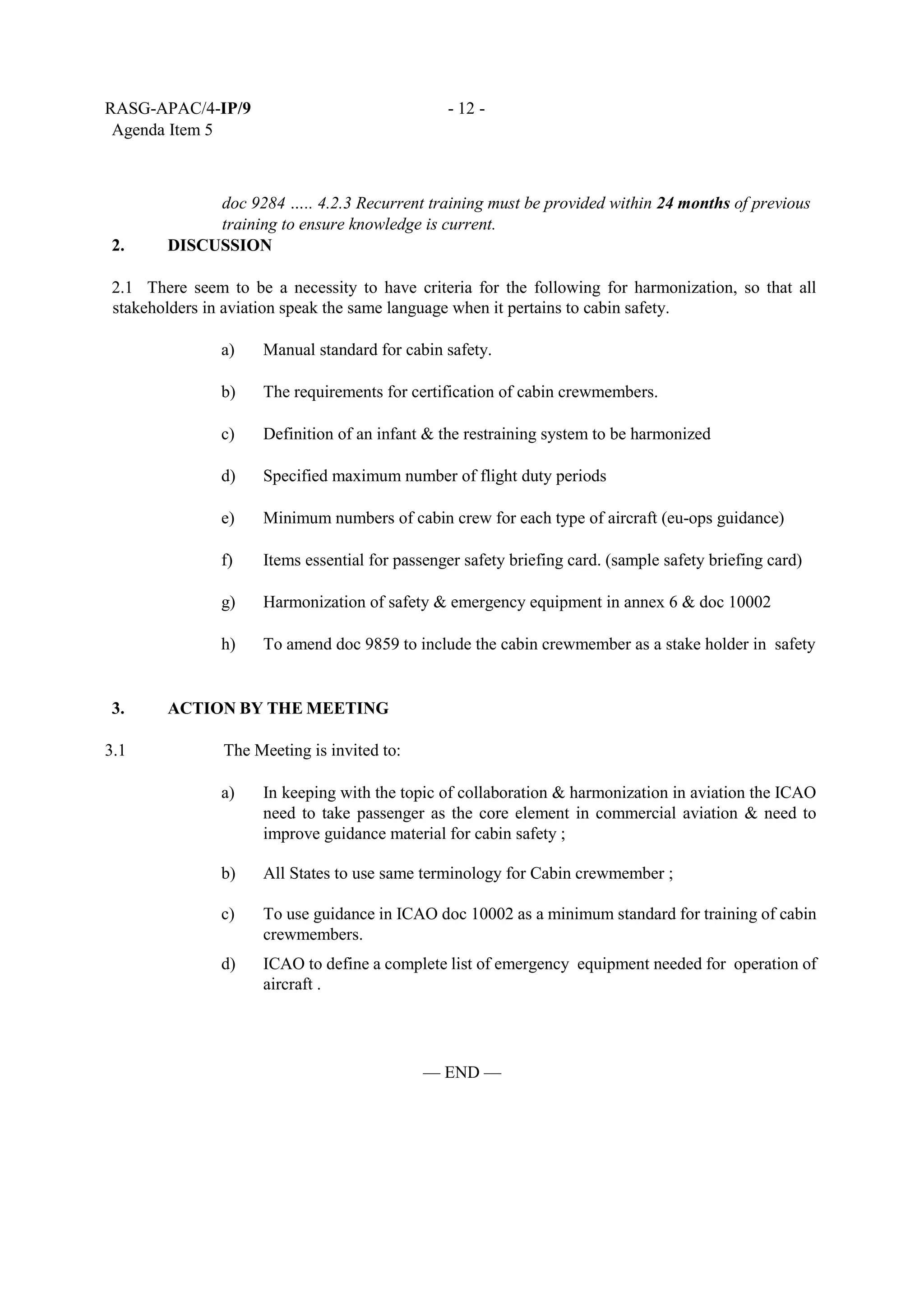The document discusses the importance of harmonization and collaboration in cabin safety. It highlights several areas where there is currently a lack of harmonized standards and guidance from ICAO regarding cabin safety practices, equipment, training procedures, and passenger information. These inconsistencies could impact passenger welfare and crew effectiveness. The document calls for ICAO to provide more comprehensive universal guidance and definitions on issues like infant safety measures, crew fatigue management, dangerous goods training, and emergency equipment requirements.











